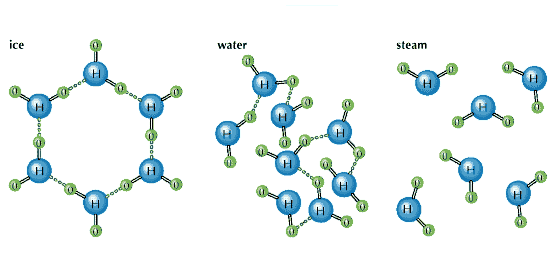

Accurate Testing Labs
208-762-8378
When the well is dry, we know the worth of water.
Quoted by Benjamin Franklin two and a half centuries ago.
H2O (WATER):
Nearly three-fourths of the Earth's surface is covered with water. Ninety-seven percent of that supply is in the form of salt water. Only 3 percent is fresh, and two-thirds of that is ice.
If all earth's water fit in a gallon jug, available freshwater would equal just over a tablespoon.
THE WATER CYCLE:
Perhaps the most important liquid in the world, water is usually easy to get from rain, springs, wells, streams, rivers, ponds, and lakes. It fills the vast ocean beds. As a vapor, water is also present in the air, where it often condenses into clouds. The bodies of most living things contain a large proportion of water. For example, water comprises about 60 percent of the weight of the human body.
Used but never used up, water constantly circulates throughout the world. A person taking a drink of water today may be drinking the same water that gave refreshment to a Stone Age man. Although water constantly replenishes the Earth, many areas almost entirely lack this prized liquid.
THE PHYSICAL STATES OF WATER:
Water's physical properties make it vastly different from most other liquids. Water, for example, has the rare property of being lighter as a solid than as a liquid. If ice (solid water) were heavier than water, frozen water in a lake would sink to the bottom and pile up to the top, killing all the marine life. Water's ability to store great amounts of heat helps living things survive through wide changes in temperature. The amount of heat produced by a man during one day's activity would be enough to raise his body temperature by as much as 300 ° F were it not for the water in his tissues.
SURFACE WATER & GROUNDWATER:
The soil covering the Earth acts as a giant sieve. Soil particles have tiny spaces between them that allow water to trickle down into the soil. When heavy rainfall occurs, these tiny spaces in soil quickly fill with water, and the excess water, called surface water, runs over the top of the soil. Such surface runoff flows as a thin, hardly noticeable sheet of water until it reaches a depression in the land, such as a gutter or a stream bed, where the water can be contained. There, it no longer flows as a sheet of water but as a clear-cut channel of water, moving downward to the ocean.
Water that infiltrates the soil trickles slowly downward or percolates, through pores and cracks in soil and rocks. Rock strata, or layers, and soil capable of holding water are called aquifers. Eventually, the water reaches a level where it can go no farther because bedrock forms a base. As more and more water accumulates, the aquifer becomes saturated (filled) with water and cannot hold anymore. Water held in aquifers is called groundwater. The depth at which groundwater is found varies because the hard bedrock base exists at varying levels. Groundwater is a major source of fresh water.
WATER IN DAILY LIFE:
Human tissues require about 2 1/2 quarts of water a day. Most persons drink about a quart of water each day. The water content of foods supplies the rest. An egg, for example, is about 74 percent water; a watermelon, 92 percent; and a piece of lean meat, about 70 percent. Beverages such as milk, coffee, tea, and soft drinks are mainly water.
On average, each person who lives in a city or on a modern farm in the United States requires more than 50 gallons of water a day for personal and household uses. These include drinking, washing, preparing meals, and removing waste. A bath in a tub consumes perhaps 25 gallons of water. About five gallons of water flow each minute a shower runs. Large amounts of water are also used in sprinkling lawns and gardens and in operating the air-conditioning units and heating systems of many homes, shops, and office buildings. More than 110 billion gallons of water are consumed that are lost to immediate reuse every day in the United States. This total includes water used in irrigation, in industry, and in fire fighting and street cleaning.
Water is very important to the industry. It turns the turbines of hydroelectric plants that produce electricity for light, heat, and power for many factories and communities. Some industries, such as the petroleum industry, need water to prepare their products. Ten gallons (38 liters) of water, for example, are needed to refine one gallon (4 liters) of gasoline. Lakes, rivers, and oceans are important water highways for the shipping industry's products.
In dry areas, farmers must irrigate their land to grow crops. Irrigation projects have produced fertile areas in regions that once were deserted. More than 100 billion gallons (380 billion liters) of fresh water are used each day to irrigate cropland in the United States.
